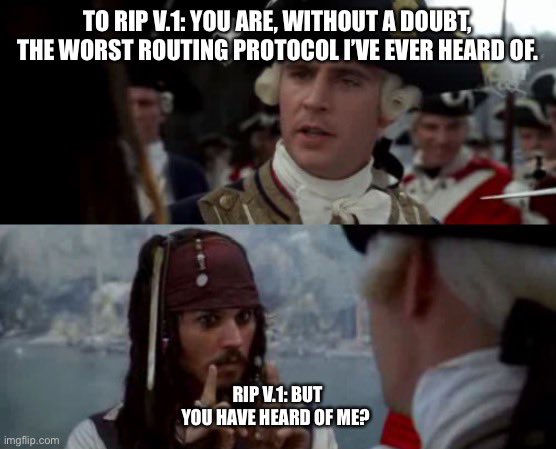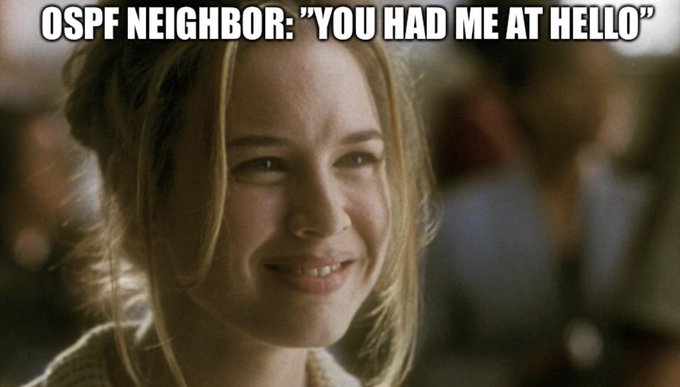I want you to remember that I don’t have the CCNA certification and what I write is only my own thoughts and I am for sure no expert. But I do have a few things to say about our routing protocols we have to work with. I am really glad that they exist so we can make packets fly all over the world, but I do like some more than others. I want to start easy, with RIP.

RIP – The anti-social protocol
Do we need to learn RIP? – Yes we do. – Why?
Well RIP is still around at some places and it’s good to understand the basics at least. It does not stand for Rest in peace, but I guess that’s what we all think. RIP stands for Routing Information Protocol.
It uses hop count to find the best path between source and destination. How many routers am I going to pass? Think of it as the anti-social protocol. RIP does want to run into (or jump) as few routers as possible on it’s way to its destination. It looks at the map and counts how many routers it might have to jump in and plan so that it meets as few as possible. Introvert. I understand RIP. I am RIP (at least some days). The maximum number of routers it has the capacity to meet is 15. Then it’s exhausted and needs rest. Therefore hop number 16 will not reach its destination. There’s a lot more to say, but I will stop here.
EIGRP – The mutant
EIGRP is a protocol that is hard to pronounce. It stands for Enhanced Interior Gateway Routing Protocol. From the beginning EIGRP was only used on Cisco products and was loyal to the bone. But after a while it was decided that everyone should be able to use EIGRP and everyone was happy. EIGRP has not chosen a side between distance-vector or link-state protocols. It works on both sides. It’s a hybrid. It has evolved into something new. It’s more awesome.

EIGRP does not have that much to say to everyones joy. That’s means that it has a low usage of network resources. The only thing being transmitted (when everything is working as intended) is hello packets. Think of Lionel Richies song ”hello” on repeat. But that’s the only thing you’ll hear. It’s also super fast. When a change in the network occures, it will update the topology very fast. Sometimes even instant. So you call it a superhero. It’s a hybrid (mutant ofc) and it’s quiet and superfast. I love it.
OSPF – the friendly and social protocol
OSPF is a very friendly routing protocol. It does not try to avoid meeting routers or starts war between different protocols and refuse to pick a side. The only thing it does is negotiate. ”Hello, would you like to be my neighbor?” it asks that everytime a new router joins. Super nice to the new guy! Don’t you agree?

It stands for Open Shortest Path First and is a pure link state protocol. It makes a map of the topology by gathering information from the routers and then makes a routing table to know which paths the packets will take, based on the destination IP address. OSPF can also tell changes that occur in the topology, for example errors that makes a link fail and then makes a new routing structure really fast to avoid getting stuck in traffic. So it’s also very dependable, friendly and smart.
BGP – The protocol that can take a leak
I already did a complete BGP post already so maybe I don’t need to do that again. But I will share a few memes and some thoughts with you (if you still are reading since this blogpost is really long and I am sorry for that).
Like I said before, BGP is the protocol of internet. But it can also be used internally to route on the inside. Yes, this is true! It blew my mind as well. Is there something BGP can’t do?

Well, I would say no to that. It does even take a leak once in a while.

That’s it for me. I apologize in advance for the lack of tech in this blogpost. It’s just my thoughts when I read about these routing protocols and how I remember what they do. I am leaving you with one last meme. I hope to see you again 🙂

Lämna ett svar